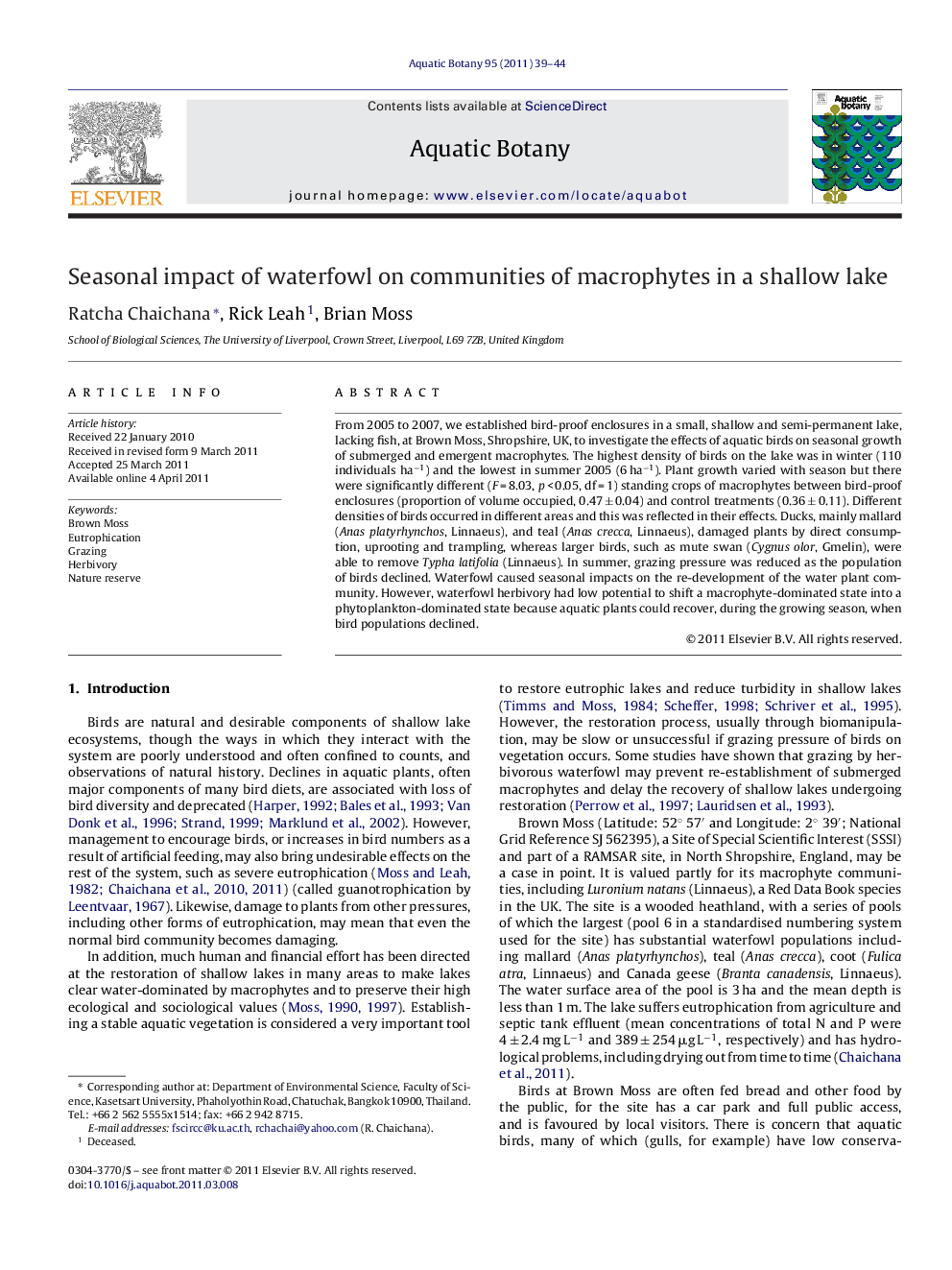| کد مقاله | کد نشریه | سال انتشار | مقاله انگلیسی | نسخه تمام متن |
|---|---|---|---|---|
| 4528087 | 1324282 | 2011 | 6 صفحه PDF | دانلود رایگان |

From 2005 to 2007, we established bird-proof enclosures in a small, shallow and semi-permanent lake, lacking fish, at Brown Moss, Shropshire, UK, to investigate the effects of aquatic birds on seasonal growth of submerged and emergent macrophytes. The highest density of birds on the lake was in winter (110 individuals ha−1) and the lowest in summer 2005 (6 ha−1). Plant growth varied with season but there were significantly different (F = 8.03, p < 0.05, df = 1) standing crops of macrophytes between bird-proof enclosures (proportion of volume occupied, 0.47 ± 0.04) and control treatments (0.36 ± 0.11). Different densities of birds occurred in different areas and this was reflected in their effects. Ducks, mainly mallard (Anas platyrhynchos, Linnaeus), and teal (Anas crecca, Linnaeus), damaged plants by direct consumption, uprooting and trampling, whereas larger birds, such as mute swan (Cygnus olor, Gmelin), were able to remove Typha latifolia (Linnaeus). In summer, grazing pressure was reduced as the population of birds declined. Waterfowl caused seasonal impacts on the re-development of the water plant community. However, waterfowl herbivory had low potential to shift a macrophyte-dominated state into a phytoplankton-dominated state because aquatic plants could recover, during the growing season, when bird populations declined.
► Aquatic birds had effects on seasonal growth of submerged and emergent macrophytes.
► Ducks damaged plants by direct consumption, uprooting and trampling, whereas larger birds, such as mute swan were able to remove Typha latifolia.
► Waterfowl caused seasonal impacts on the re-development of the water plant community.
► Waterfowl herbivory had low potential to shift a macrophyte-dominated state into a phytoplankton-dominated state.
► Aquatic plants could recover, during the growing season, when bird populations declined.
Journal: Aquatic Botany - Volume 95, Issue 1, July 2011, Pages 39–44